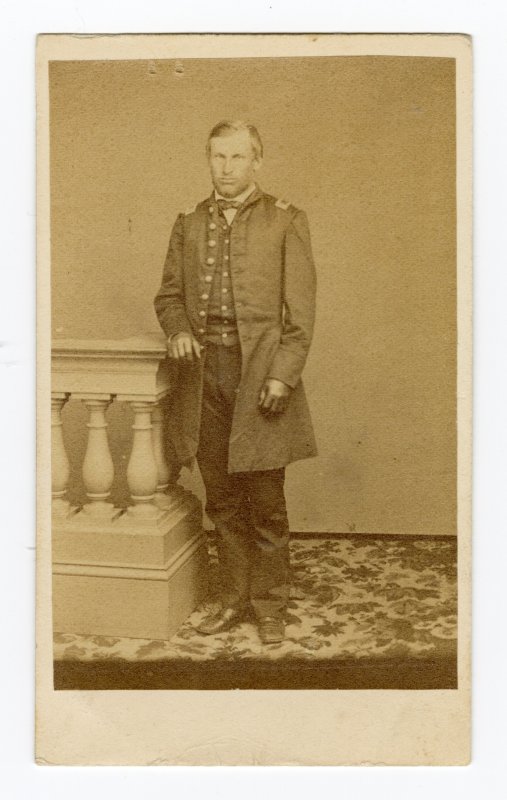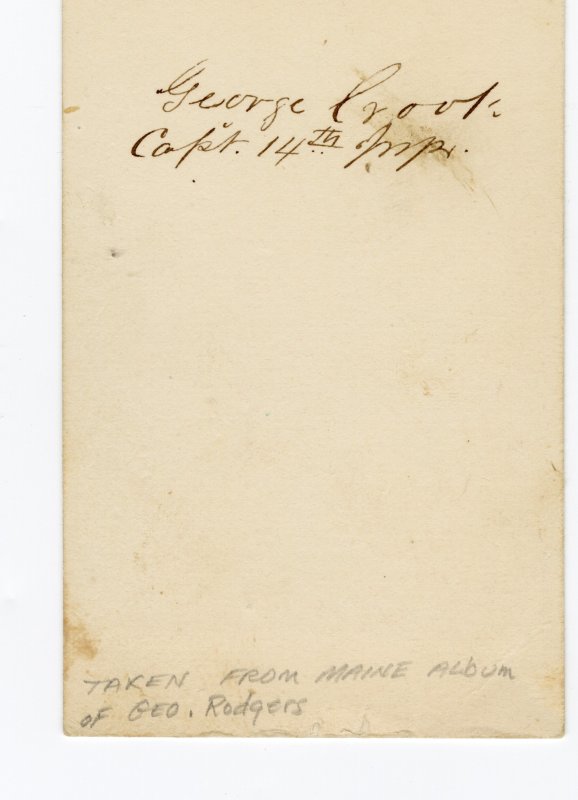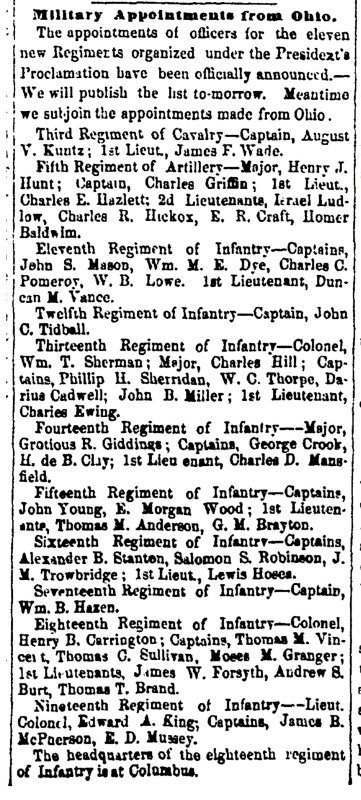Extremely Rare Early War Image of General George Crook - Signed
Item CDV-10222
Price: $2700.00
Description
Crook, George, major-general, was born near Dayton, Ohio,Sept. 8, 1828, was graduated at West Point in 1852, and served
in California as 2nd lieutenant in the 4th U. S. infantry until
1861, participating in the Rogue river expedition in 1856, and
commanding the Pitt river expedition in 1857, where he was en-
gaged in several actions, in one of which he was wounded by an
arrow. He had risen to a captaincy at the time of the outbreak
of the Civil war, and was ordered east to become colonel in the
36th Ohio volunteer infantry. He commanded a brigade in west-
ern Virginia, being wounded at the affray at Lewisburg, and
then engaged in the northern Virginia and Maryland campaigns,
winning the brevet of lieutenant-colonel U. S. A. for his serv-
ices at Antietam. He was in command in 1863, of the 2nd cav-
alry division, Army of the Cumberland, and, after the battle of
Chickamauga, in which he distinguished himself, pursued
Wheeler's cavalry, driving it across the Tennessee into Alabama
with great loss. In Feb., 1864, he was transferred to the
command of the military district of West Virginia, made con-
stant raids, partook in various actions and won the battle of
Cloyd's mountain, May 9, 1864, and later in the year took part
in Sheridan's Shenandoah campaign. For his services he re-
ceived, March 13, 1865, the brevets of major-general and briga-
dier-general in the regular army. He commanded the cavalry of
the Army of the Potomac in March and April, 1865, during which
time he was engaged at Dinwiddie Court House, Jetersville,
Sailor's creek and Farmville, until the surrender of Lee at Ap-
pomattox. He was afterwards transferred to the command of Wil-
mington, N. C, where he remained from Sept. 1, 1865, until mus-
tered out of the volunteer service Jan. 15, 1866. After the
war Gen. Crook gained great fame as a fighter of Indians, and
manager of them, being equally skillful in both. After a short
leave of absence, he was commissioned lieutenant-colonel U.S.A.
July 28, 1866, and assigned to service in Idaho, where he ac-
tively engaged against hostile Indians until 1872, when he was
ordered to quell Indian disturbances in Arizona. He sent an
ultimatum, ordering the chiefs to return at once to their res-
ervations or "be wiped off the face of the earth," and, this
being disregarded, he attacked them in what was considered an
impregnable stronghold, the Tonto basin, and soon brought them
to subjection. Next, in 1875, he defeated the Sioux and Chey-
enne Indians at Powder river, Wy., following this victory with
two more, one at Tongue river and one at Rosebud. The final
victory so incensed the Sioux that they massed eleven tribes
and at Little Big Horn massacred Gen. Custer with 277 of his
famous troopers, in what has since been known as the "Custer
Massacre." Crook was given reinforcements and proceeded so
vigorously that by May, 1877, all the hostile tribes in the
northwest had yielded. Returning to Arizona in 1882 he drove
off white marauders from lands belonging to the Apaches, and
pledged the :Indians the protection of the government. This
action he followed in 1883 by regaining a large amount of plun-
der stolen by the Chiricahuas, and making those Indians peace-
able and self-supporting, and then for two years had complete
charge of Indian affairs. Gen. Crook was promoted major-
general in 1888 and assigned to the Department of the Missouri.
He died in Chicago, Ill., March 1, 1890.
Source: The Union Army, vol. 8
Thank you to Roger Hunt for helping to verify this image of Crook.
Roger's email:
Hi Jim,
I am happy to report that this is definitely an early-war image of General George Crook.
I can see the resemblance to later images of Crook. The key to the identification, however, is the attached article from the June 26, 1861, issue of the Cleveland Weekly Plain Dealer, listing George Crook as a prospective Captain of the 14th U.S. Infantry. For some reason he instead became a Captain in the 4th U.S. Infantry.
Best Wishes,
Roger



